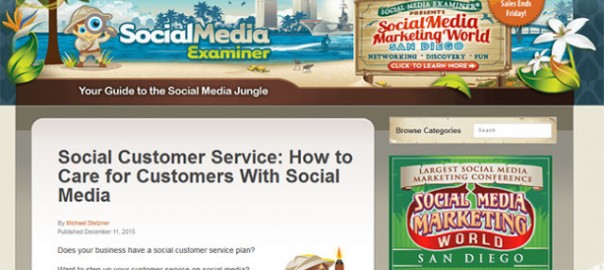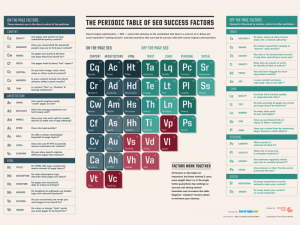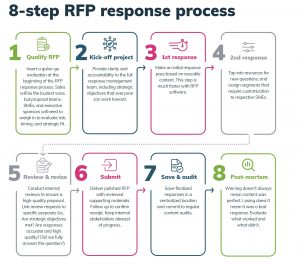With over 2 million blog posts published each day, it has become a tough game for bloggers to stay popular. Turning organic visitors into returning readers isn’t an easy game.
The key to getting consistent traffic, raving fans and convertible leads now rests upon one single factor that is, providing value to your readers. You have to make your articles informative and add value to your readers.
In today’s post, we’ll discuss three killer strategies to help readers benefit from your blog. This will help you solve the problems of your readers. Ultimately, you will build credibility and get loyal readers for your blog.
Shall we start?
1) It’s not about you; it’s about your readers:
When you are writing a post, do not write about something you like to read. Your posts should focus on the problems of your readers and aim at solving them.
Here is how to do it:
1) Research:
Any random post you write isn’t optimized to help your readers, to write content for them, you have to know your readers better. Create a marketing persona to help you understand your readers better. Here’s how. Visit the forms and sites they frequently visit. Now you can research their problems, understand their lingo and find out what they are looking for.
You can then use Google keyword planner to find out subsequent keywords on those topics.
2) Write the post:
After finding the keyword, you should aim to write a post that describes their situation, what to do about it and finally, how to do it. Most internet surfers have an attention span that is less than a goldfish, so write a magnetic introduction. The introduction should give them a glimpse of what the post contains.
If you want your readers to benefit from your blog, value for their time. Write short paragraphs and bulleted points to help them easily scan through your content. Adding relevant images gives the readers time to grasp the text they just read.
Do not bring two tips together. This will confuse your readers. Every section of the body of your article should be give one job. It should aim at one single topic and speak only about it.
3) Conclude:
Most bloggers use the conclusion as a way to heave a sigh from the article writing. Often its abrupt, unrelated to the article and does not add any value to the post. Here is how to make your readers gain from your conclusion:
- Your conclusion should be a recap of what the blog post has come over.
- Give a quick summary and highlight the important points, if any.
- Use the conclusion as a method to engage with your readers. Ask your readers if you missed anything. You can also ask them their experience with the problem and tips they used prior to your writing the post.
2) Give your readers all the information they need (Curate Content):
Make your blog the one stop destination for all topics in your niche. All topics doesn’t mean you have to jump out of your content theme and write content to cater to your readers. It means give them everything they need to know on your topic.
Writing how to guides and tutorials can make your blog look monotonous and leave your readers wanting for more. You should aim at giving them all the current news, informational articles and bits and bytes even from other blogs.
Content curation is the act of finding, unifying and delivering relevant information from various sources in one place (usually your blog or social media). This isn’t plagiarism because you just write a few lines on the created content to help your readers know about it and then link it to the original source.
Why you should do it:
- It’s cost effective and requires less time than content curation.
- Your readers get all information at one point and hence stay loyal to you.
- It helps build relationships with both the curator and the original writers.
How to do it:
- Stay strict to your niche. Unrelated content will only increase bounce rates and irrelevancy.
- Subscribe to official blogs an authority blogs in your niche to find out what is trending. For example, if you are a social media marketing blog stay close to blogs like Social Media Examiner, official blogs of popular social media platforms etc.
- Discover content from these platforms using tools like Alltop, Feedly and scoop.it.
- Give credit to the original publishers.
- Do not over do it.
Here are examples of big players doing it.
1) Social Media Examiner has a weekly section of social media news in which it shares the latest news in the niche.

2) World’s coolest offices a post by Inc. that is curated by Huffington Post.
3) Call to Action:
Often, we write how-to guides and blog posts that aim at solving the problem of your readers. But, that doesn’t make any change to our reader and he bounces off to other sites searching for another guide. What is wrong in your content? Why did the reader not act on your advice?
It’s simply because you failed to evoke the desired action from your reader. The reader did not understand what exactly he was needed to do. Here is how to solve this problem and make yor content a ain for your readers.
Add a Call To Action:
Adding a call to action (often at the end of your posts), makes even dull and boring content into an actionable guide. Using a call to action can give you the power to get your reader take the desired action to solve his problem.
You can place a call to action anywhere inside the post, but the one with the conclusion has greater impact. This is when the reader is ready to take action. You’ve done what you could do by writing the post. Tell your reader what he should do with a call to action.
Few tips to keep in mind while writing call to actions:
- Make it short and clear.
- It should result in solving the problem of your reader. For example, if you are writing an introductory tutorial about a new product, use the CTA to frame the readers to check out the product.
- Your CTAs shouldn’t always aim at selling.
Over to you,
These tactics can simply increase the relevancy of your content. Using these three strategies, you can make your content more digestible and actionable. So, go to your content archives, find some blog posts that you think needing improvement. You can then edit these posts and add the missing strategy from this post. Write your experiences about letting your readers benefit from your blog, in the comments below.
Digital & Social Articles on Business 2 Community(35)
Report Post




